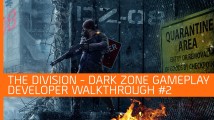The item and loot system in Tom Clancy’s The Division 2 has been vastly improved over the one from its predecessor and is due to the RPG mechanics still one of the most important gameplay components in the game.
Contents
Although your Agent is already equipped with high-tech gear, upgrading your character is an inevitable and essential part of the game.
Rarity Levels
The item’s rarity or quality defines how good an item can be in terms of the
- different bonuses it has
- how many bonuses it has
- how big the actual bonuses are (min. and max. values)
and also the item’s level plays a role in how valuable it finally is. A level 5 Protective Vest could have a bonus of 3% Weapon Damage., while the same on level 10 could have 5%.
There are 7 different item rarities in The Division 2 that can be found in the game. While it requires a certain level to find certain qualities, you will find better gear the more you progress.
- Worn (white)
- Standard (green)
- Specialized (blue)
- Superior (purple)
- High-End (yellow)
- Exotic (red)
- Gear Set (teal)
Vanity Items
Besides normal items, so-called vanity items are applicable to parts of your gear. They have no stats and serve the only purpose to change your character’s change the style and appearance.
Gear Score
After reaching character level 30, all items will be represented by a Gear Score in addition to the items’ rarity levels that makes it easier to determine the overall level of your gear. The average Gear Score of an Agent’s loadout can give some basic information about how good or bad the equipped gear is, but shouldn’t be the only indicator for it.
The Gear Score can be increased by playing through The Division 2’s endgame content. The higher the difficulty, the higher the chance for finding items with a higher Gear Score. Item drops and their assigned Gear Score are based on the maximum Gear Score of your items in your inventory and stash! This allows you to play with any gear combination while still being able to obtain high-level gear.
World Tiers
The Division 2’s endgame is organized into 5 World Tiers. Each World Tier has a corresponding Gear Score range and signalizes the loot that can drop within a certain WT. In order to advance within these WTs, two Invaded Missions need to be completed to unlock a Stronghold which needs to be taken back as well.
The Strongholds require you to have a certain Gear Score (average loadout) in order to start the mission. Completing it automatically moves you into the next World Tier.
- WT1: Max GS 300
- WT2: Max GS 350 (previous Stronghold requirement: 275)
- WT3: Max GS 400 (previous Stronghold requirement: 325)
- WT4: Max GS 450 (previous Stronghold requirement: 375)
- WT5: Max GS 500 (previous Stronghold requirement: 425)
Exotics
Exotics are unique Weapons and Gear with their own lore, looks and talents. They can be acquired by completing random activities in the Open World, but can also be crafted when having the correct Blueprint for it. Crafting Exotics requires exotic material, which in turn can be obtained by deconstructing any Exotic item.
More about it coming soon.
Brand Sets
The Division 2 introduces so-called Brand Sets which are not tied to a specific item rarity or level in order to allow players to start experimenting with their builds at an early stage in the game, without having to wait until the real endgame with actual Gear Sets starts.
Gear Sets
Gear Sets work similar to Brand Sets, but are designed towards the endgame. They can consist of up to 6 pieces and have therefore more powerful bonuses to unlock.
Looting
Acquiring new items (equipment) becomes more and more important throughout the game. New gear and weapons can be obtained by exploring Washington, D.C., and killing enemies or finding hidden loot crates, but there are many more ways to get new loot.
The best and most valuable loot can be found in the Dark Zone (high risk, high reward). Despite that, if you are not a fan of player versus player encounters, it would take you a bit longer to find those items outside this zone, but the chances out there are pretty good because all enemies can theoretically drop (the best) loot in the game.
Here are some of the possibilities:
- Roaming NPCs and Named Bosses
- Hidden spots and crates
- Looting of fallen enemies and other players in the Dark Zone
- Trading
- Extraction Hijacking
- Caches
- Crafting
The item-drops are based on randomly generated parameters, which make them unique like it’s working in other RPGs. Depending on the rarity levels described above, they can be provided with additional features/modifiers, that change or improve the way an item works.
Loot Sharing
There are two ways of how loot drops are shared between players:
- PvE Zone: Everybody gets his own loot, meaning that nobody else than you can take it.
- Dark Zone: Everybody gets his own loot when killing NPCs, but loot of recently killed players is shared amongst all players in the Dark Zone, following the principle of “First come, first serve”.
Loot Trading
Loot can also be traded between players you have played within a group and within a certain time, starting with the time of the initial item pick-up.
Once you drop an item for another member in your team, it can be picked up by everyone that was playing with you when the drop happened, so evaluate first for yourself if you can trust them all.
Crafting System
The crafting system in Tom Clancy’s The Division 2 allows you to create new items like weapons and gear, or improve and customize your equipped gear by using different types of Crafting Sources.


